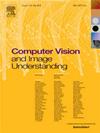M3A: A multimodal misinformation dataset for media authenticity analysis
IF 4.3
3区 计算机科学
Q2 COMPUTER SCIENCE, ARTIFICIAL INTELLIGENCE
引用次数: 0
Abstract
With the development of various generative models, misinformation in news media becomes more deceptive and easier to create, posing a significant problem. However, existing datasets for misinformation study often have limited modalities, constrained sources, and a narrow range of topics. These limitations make it difficult to train models that can effectively combat real-world misinformation. To address this, we propose a comprehensive, large-scale Multimodal Misinformation dataset for Media Authenticity Analysis (), featuring broad sources and fine-grained annotations for topics and sentiments. To curate , we collect genuine news content from 60 renowned news outlets worldwide and generate fake samples using multiple techniques. These include altering named entities in texts, swapping modalities between samples, creating new modalities, and misrepresenting movie content as news. contains 708K genuine news samples and over 6M fake news samples, spanning text, images, audio, and video. provides detailed multi-class labels, crucial for various misinformation detection tasks, including out-of-context detection and deepfake detection. For each task, we offer extensive benchmarks using state-of-the-art models, aiming to enhance the development of robust misinformation detection systems.
M3A:用于媒体真实性分析的多模态错误信息数据集
随着各种生成模型的发展,新闻媒体中的虚假信息变得更具欺骗性,也更容易制造,从而带来了一个重大问题。然而,现有的误报研究数据集往往模式有限、来源受限、主题范围狭窄。这些局限性使得我们很难训练出能有效对抗真实世界中错误信息的模型。为了解决这个问题,我们为媒体真实性分析(Media Authenticity Analysis,M3A)提出了一个全面、大规模的多模态错误信息数据集,该数据集具有广泛的信息源以及细粒度的主题和情感注释。为了策划 M3A,我们收集了全球 60 家知名新闻机构的真实新闻内容,并使用多种技术生成虚假样本。这些技术包括修改文本中的命名实体、在样本之间交换模式、创建新模式以及将电影内容歪曲为新闻。M3A 包含 708K 个真实新闻样本和 600 多万个假新闻样本,涵盖文本、图像、音频和视频。M3A 提供了详细的多类标签,这对各种错误信息检测任务(包括断章取义检测和深度伪造检测)至关重要。对于每项任务,我们都使用最先进的模型提供了广泛的基准测试,旨在加强强大的错误信息检测系统的开发。
本文章由计算机程序翻译,如有差异,请以英文原文为准。
求助全文
约1分钟内获得全文
求助全文
来源期刊

Computer Vision and Image Understanding
工程技术-工程:电子与电气
CiteScore
7.80
自引率
4.40%
发文量
112
审稿时长
79 days
期刊介绍:
The central focus of this journal is the computer analysis of pictorial information. Computer Vision and Image Understanding publishes papers covering all aspects of image analysis from the low-level, iconic processes of early vision to the high-level, symbolic processes of recognition and interpretation. A wide range of topics in the image understanding area is covered, including papers offering insights that differ from predominant views.
Research Areas Include:
• Theory
• Early vision
• Data structures and representations
• Shape
• Range
• Motion
• Matching and recognition
• Architecture and languages
• Vision systems
 求助内容:
求助内容: 应助结果提醒方式:
应助结果提醒方式:


